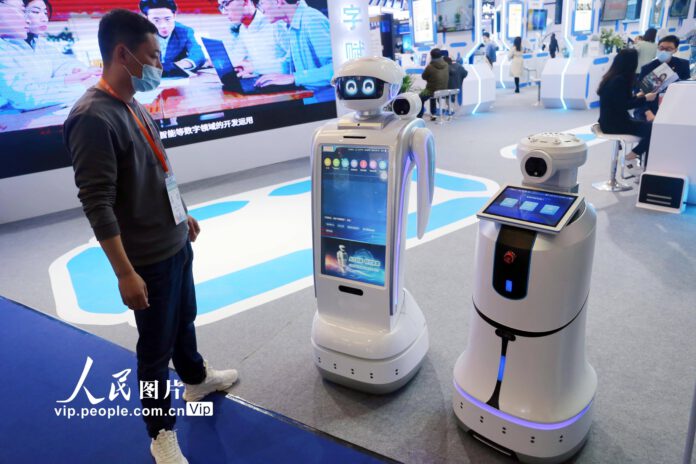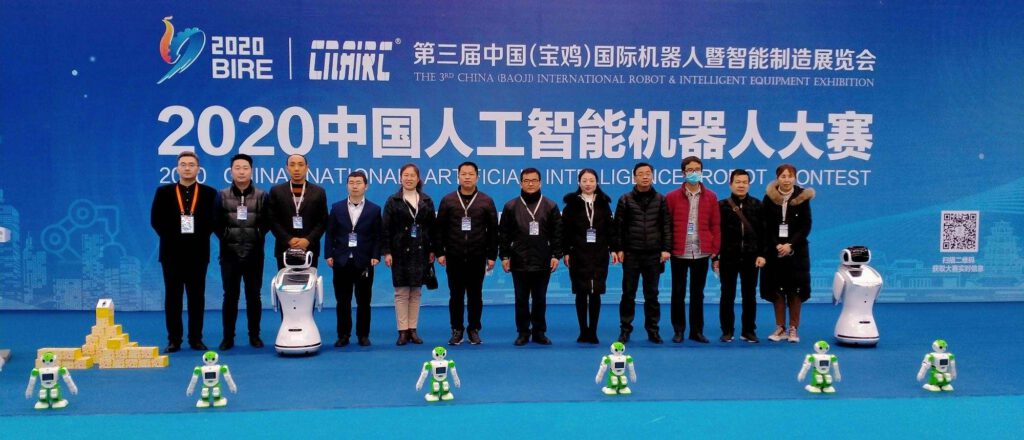
The European Commission’s Directorate-General for Research and Innovation, together with the EC Joint Research Centre, released the report Trends in the use of AI in science, a bibliometric analysis.
The report shows that in recent years, the application of AI in global scientific research has shown a rapid growth trend, with an average annual increase of more than 5% in the literature from 2002 to 2021, with engineering sciences, biomedicine, geography, physical and material sciences, and chemistry being the fastest growing areas.

The report notes that the likelihood of scientific discoveries being driven by AI applications and tools will increase significantly in the future. From a country perspective, China is in the lead, with an average annual literature growth rate of 39%, followed by the EU and the US with 32% and 36%, respectively. In the top 10% of the most cited literature, China’s citation rate is 1.65 and 1.6 times higher than that of the EU and the US, respectively, while in 1997, China’s share of academic papers was only 4.26%.
China is currently the country with the highest level of enthusiasm when it comes to artificial intelligence research. Recognizing that AI is empowering industries and profoundly changing human society, China aims to grasp the rise of AI in the face of its historical failure to respond in time to the first and second industrial revolutions and miss the country’s industrialization.
As early as 2020, Stanford University’s AI Index 2021 Report noted that China’s AI journal papers surpassed the U.S. in global citations for the first time, becoming the world’s number one, several years after the total number of journal papers surpassed the U.S. In the academic research world, paper citations are a measure of how well a scientific paper is recognized by scholars at other institutions.

In just two decades, how did China catch up with other countries that have been focused on AI for longer and build a world-leading AI research infrastructure?
Research in AI does not necessarily provide a lasting advantage. AI is different from other technologies in several ways. While research drives the field, it is often publicly shared, proprietary research outputs are less important, and improvements often stem from a virtuous cycle of users generating data and companies upgrading their products based on data insights.
In terms of knowledge and technology, many of the essential algorithms in AI are already public knowledge, available from published papers and conference literature. The open source nature of AI is important for latecomers to catch up with first movers, as it allows latecomers to bridge the knowledge gap with their predecessors in a short period.

The second thing that makes AI different from traditional industries is the link between innovation and profit generation. Data and talent are more important in AI research than patents. In traditional industries such as pharmaceuticals and mobile communications, patents play an important role in securing a company’s position and protecting profit streams. The open-source nature of AI, on the other hand, dictates that the competitive advantage of AI companies often depends on the ability to aggregate large databases and come up with domain-specific knowledge or ways to apply it faster than other companies.
Thus, there are three important assets in the AI era: data, computer science, and engineering talent. All of these resources are abundant in China. With its large population, China has an advantage in generating and utilizing large amounts of data, and decades of promoting technology and engineering have produced a large number of highly qualified computer science and engineering professionals.

Finally, the currently developed AI to solve specific problems relies on domain-specific expertise and user-generated data to achieve improvements. For example, AI often needs to be adapted to specific business scenarios. First, make a product, such as speech recognition, then attract many users to use it, generate data, and finally use machine learning to improve the product based on the data. The product is upgraded in this virtuous cycle.
China’s vibrant market is receptive to such new AI products, and Chinese companies can bring AI products and services to market relatively quickly, and Chinese consumers embrace them quickly. As a result, AI technologies and products have been able to develop rapidly in an environment that supports them.

The Chinese market is conducive to the adoption and improvement of AI products. Big data is critical to AI innovation, and it is easy to see to what extent China’s huge market size has aided in the rapid development of AI. Chinese companies are uniquely positioned to take advantage of this market to build large databases. For example, Didi, China’s equivalent of Uber, is now the world’s largest carpooling company. Didi handles more than 70 terabytes of data per day, plans routes 9 billion times, and gets a thousand requests for rides every second, says Didi CEO Liu Qing.
China’s huge market not only has advantages in terms of big data but also provides a strong economic incentive for companies to solve technical challenges. Chipsets, for example, have been a weakness in China’s information and communications technology industry, but not long ago Chinese companies made significant progress to close the gap in AI chipsets. An executive at ZTE, one of the world’s largest ICT companies, explains that China’s huge market offers great economies of scale for the ICT industry, and the investments used to advance technology in this area are quickly paid off.

In addition to its size, the Chinese market exhibits a rich diversity and is changing rapidly. This status quo provides a wide variety of opportunities for both startups and incumbents to quickly explore different ways of applying AI in different market segments.
Plus, China has a strong AI development policy. In recent years, China has introduced a series of policies to promote AI development, such as Made in China 2025, Action Plan for Promoting the Development of Big Data, and Development Plan for New Generation Artificial Intelligence, etc. These policies have provided a lot of opportunities for entrepreneurs, investors, and even investors to develop AI, sending a clear signal to stakeholders in AI such as entrepreneurs, investors and even researchers that the AI field has government support and is worth investing in.
(Source: South China Morning Post, reuters, EU Commission)



